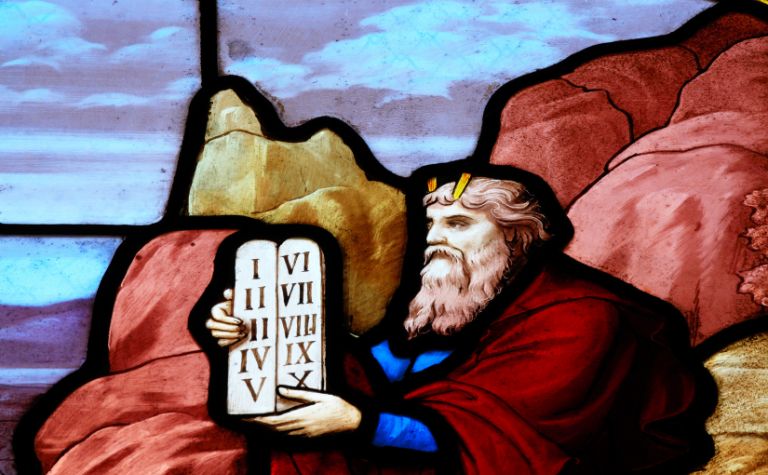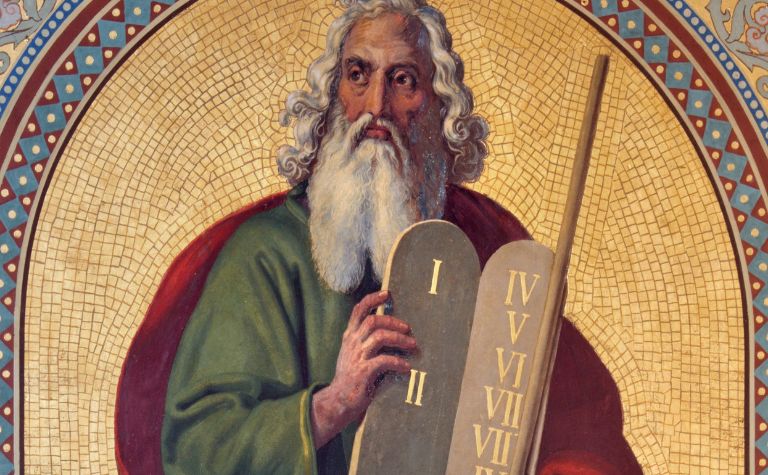Moses had one of the most interesting families in the Bible. He was born to Hebrew parents, yet the Pharaoh’s daughter raised him. Moses’ siblings, Aaron and Miriam, played critically important roles in his ministry yet were among his harshest critics. Many people also want to know what the Bible says about who Moses married.
Most Bible scholars believe Moses was married twice. Zipporah, a Midianite woman and daughter of Jethro, was his first wife. Later, perhaps after the death of Zipporah, Moses married an unnamed Cushite woman. One minority view is that the women may have been the same person.
How does Moses meet Zipporah? What ethnicity is she? Did they have children together? How does she save his life? When did Moses marry a Cushite? Why were his siblings so upset about it? How strong is the evidence that suggests the women may have been the same person? Keep reading to learn the answers to these questions and others.
Also, understanding Moses’ life helps when you know its beginning and end. Discover how old Moses was when he died to get more insight.

What the Bible Reveals About Zipporah
The name Zipporah only appears three times in the Bible. All the references to her are in Exodus. After Moses killed an Egyptian for beating a Hebrew slave, he hid the body in the sand, fleeing to Midian, fearful for his life (Exod. 2:11-15). The land of Midian lay east of Egypt in the Sinai Peninsula.
| Name | Zipporah |
| Hebrew | צִפֹּרָ֥ה |
| Meaning | small bird or sparrow |
| Ethnicity | Midianite |
| Father | Jethro |
| Mother | Unnamed |
| Siblings | Six sisters |
| Children | Gershom and Eliezer |
Moses marries Zipporah, Jethro’s Daughter
Soon after Moses arrived in Midian, he saved seven women, the daughter of a Midianite priest named Jethro, from a group of hostile shepherds (Exod. 2:16-17). This circumstance led to a friendship with Jethro, who later advised Moses on how to lead the Israelites after the nation escaped slavery in Egypt (Exod. 18:1-27).
In Midian, Moses decided to stay with the family. Jethro gave him one of his daughters, Zipporah, in marriage. “And Moses was content to dwell with the man, and he gave Moses his daughter Zipporah” (Exod. 2:21).
Zipporah gives birth to Gershom and Eliezer
Moses and Zipporah’s eldest son was Gershom. The passage reads, “She gave birth to a son, and he called his name Gershom, for he said, ‘I have been a sojourner in a foreign land'” (Exod. 2:22). Gershom’s name reflected Moses’ ethnic identity as a Hebrew who was living outside his homeland.
As Exodus makes clear in a later passage, Moses neglected to circumcise Gershom after his birth, a failure of a Hebrew father’s duty. It was such a great offense that God decided to kill him.
Suddenly, Zipporah, not Moses, grabbed a knife and cut off Gershom’s foreskin, throwing it at Moses’ feet. As blood covered Moses’ feet, Zipporah’s quick action covered Moses’ offense (Exod. 4:24-26).
Zipporah and Moses also had a second son named Eliezer. His name means “God is help,” recalling that God protected Moses’ life when he confronted Pharaoh in Egypt (Exod. 18:4). Though the Bible mentions 11 men named Eliezer, there is only one other verse that refers to this particular one (see 1 Chron. 23:15).
Zipporah reunites with Moses at Mount Sinai
The Bible last mentions Zipporah’s name when Moses sent her and their sons to Jethro before his confrontation with Pharaoh. “Now Jethro, Moses’ father-in-law, had taken Zipporah, Moses’ wife, after he had sent her home, along with her two sons” (Exod. 18:2-4).
Though the passage doesn’t mention Zipporah’s name again, Jethro took her, Gershom, and Eliezer to Moses when the Israelites camped at Mount Sinai after they escaped Egypt (Exod. 18:5-7). What happened to Zipporah after this is unclear (more below).
Also, the story of Moses’ death is one of the most unique in the Bible. Discover how Moses died to learn more about his life and legacy.

The Cushite Woman: Moses’ Second Wife
Numbers 10-12 record the time between Israel’s encampment at Mount Sinai and their journey to the wilderness of Paran. As the nation’s challenges multiplied, their complaints became more intense. They grumbled about their lack of food and the decisions of their leader, Moses, including who he chose to marry.
Numbers 12:1 reads, “Miriam and Aaron spoke against Moses because of the Cushite woman whom he had married, for he had married a Cushite woman” (ESV). Unfortunately, the text doesn’t make explicit what upset Miriam and Aaron, but the reference to the ethnicity of Moses’ wife may be a clue.
If this interpretation is correct, then Moses’ siblings were upset that he didn’t marry a Hebrew. Furthermore, their harsh criticism could also have been rooted in the view that non-Hebrews posed dangers for the nation at this point in their journey.
Numbers commentator R. Dennis Cole explains that Miriam may have seen Moses’ marriage to a non-Hebrew as threatening the nation. “The rabble of mixed origins had instigated a rebellion that led to considerable loss of life for the community. Miriam may have been suggesting that a little ethnic cleansing might be beneficial to the survival of the Israelites.” [1]
Also, Moses’ family played an important role in his life and ministry, but little is written about his father. Learn what Exodus says about who Moses’ father was to get more insight.

Was the Cushite woman Zipporah?
A minority view among Bible scholars is that the Cushite woman and Zipporah are the same. Bible scholar Philip Budd reflects the majority view when he writes, “There is no attempt to identify this woman with Zipporah (Exod. 2:21), and such a connection cannot simply be assumed.” [2]
Most scholars reject the idea that Exodus and Numbers refer to the same woman because the Bible says they had different ethnicities. Zipporah was a Midianite (see above), and Scripture often identifies Cush as Ethiopia, a region in northeast Africa (e.g., 2 Kings 19:9). The Bible never uses the terms Midianites and Cushites synonymously.
The main reason some think the women are the same is the belief that “Cushite” may have been a way to describe a person with darker skin. Zipporah, who was from the Sinai Peninsula, may have had darker brown skin, and Moses’ referred to skin shade in their references to her. But, again, most scholars think this interpretation lacks sufficient evidence.
What happened to Zipporah?
The Bible doesn’t say. However, most scholars think the possibilities are that: (1) Zipporah died, (2) Moses divorced her, or (3) She was still living, and the Cushite woman was Moses’ second wife.
Numbers commentator Ronald Allen writes, “Most likely, however, the possibility is that Moses had taken a new wife. In this case the new wife could have been a second wife, if Zipporah was still alive. Or he may have married again after the death of Zipporah (which is not recorded) or following a divorce from her (which is also not recorded).” [3]
Also, Moses was a Hebrew even though he was raised in the courts of Egypt. This fact makes many readers wonder what tribe Moses was from in Israel.
References:
[1] Numbers by R. Dennis Cole. New American Commentary. p. 200.
[2] Numbers by Philip J. Budd. Word Biblical Commentary. p. 136.
[3] Numbers by Ronald Allen. Expositor’s Bible Commentary Revised. p. 199.
Related Questions
Moses didn't live to experience the culmination of his life's work. He led his people out of slavery in Egypt, then through wandering in the desert for 40 years and eventually to the brink of the...
Bible readers remember Moses for learning God's name through a burning bush, parting the Red Sea using God's power, and receiving the 10 Commandments from God on Mount Sinai. He is also known for...
